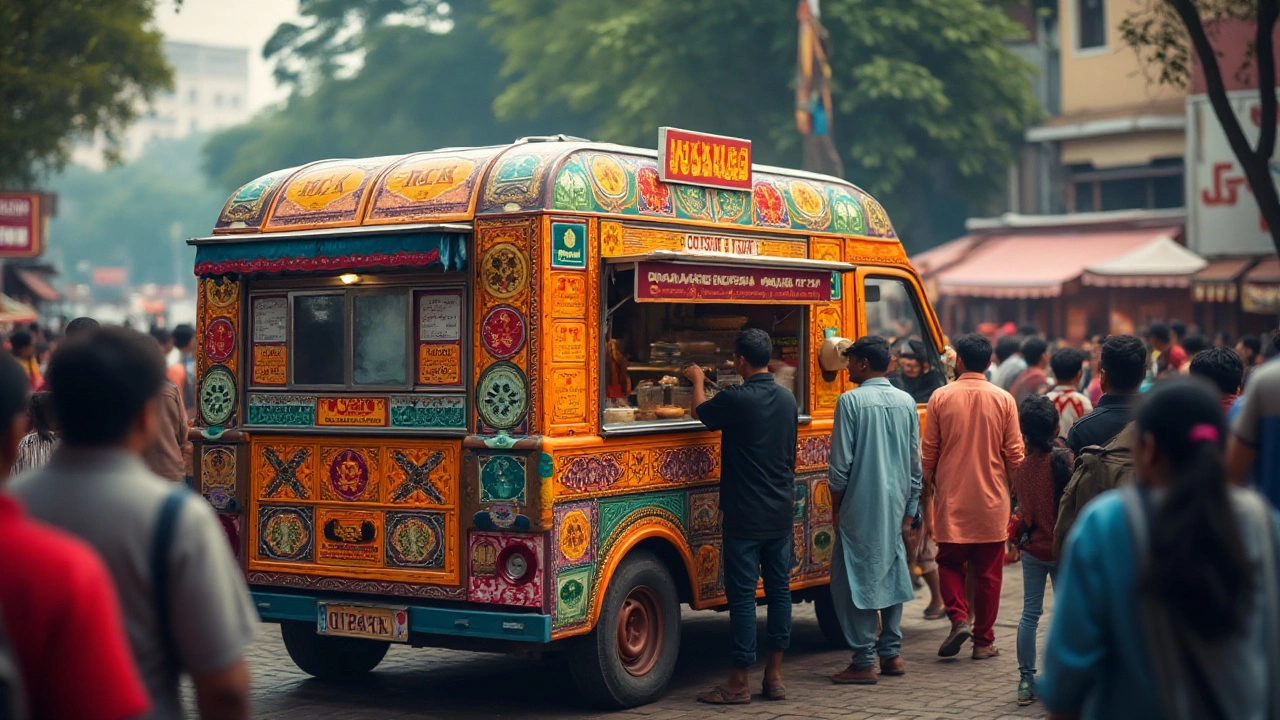- Who Makes Honda Engines in India? The Real Manufacturer Behind the Power Nov 17, 2025
- How to Start a Small Scale Industry Successfully Mar 31, 2025
- Fastest Growing Pharma Company in India: Latest Rankings, Data & Trends 2025 Jul 7, 2025
- Top Textile Manufacturing Giants: Spotlight on Global Leaders in 2025 Jan 28, 2025
- Biggest Weaknesses of Small Scale Industry and How They Hold Back Growth Jun 24, 2025
Street Food and the Rise of Modern Manufacturing in India
Ever wonder why a samosa from a Delhi stall tastes just as good as the one you bought at a supermarket? The secret is simple – the same high‑tech processes that make cars and steel also help chefs serve safe, tasty bites on the go.
India’s street‑food culture is huge. From spicy chaats in Mumbai to sweet jalebis in Kolkata, millions of people rely on these quick meals every day. But behind the bustling stalls, there’s a whole network of factories, equipment makers, and food‑tech innovators making sure the ingredients stay fresh, the oil stays clean, and the packaging is both cheap and sturdy.
Why Food Processing Matters for Street Vendors
Most street vendors don’t grow their own wheat or grind their own spices. They buy them from local processors who use modern equipment to grind flour, roast beans, or freeze dough. This means less waste, longer shelf life, and consistent flavor – crucial when you’re serving hundreds of customers a day.
Take frozen paratha dough. A factory can produce it in bulk, flash‑freeze it, and ship it across states. The vendor simply thaws, cooks, and serves. The result? Faster service, lower labor costs, and fewer hygiene issues. Same principle applies to ready‑to‑cook kebab skewers or pre‑spiced chickpea mixes.
Safety, Quality, and the Role of Technology
Safety is a big concern for anyone eating on the street. Modern food‑processing plants use temperature‑controlled storage, automated cleaning systems, and strict quality checks. Sensors monitor oil temperature in real time, preventing the formation of harmful compounds that can develop when oil is overheated.
Technology also helps vendors stay compliant with local regulations. Mobile apps now let them scan batch numbers, track expiry dates, and even receive alerts when a product recall happens. This transparency builds trust – customers feel safer knowing their favorite golgappa supplier follows strict standards.
Another game‑changer is sustainable packaging. Biodegradable containers made from plant fibers are becoming popular, reducing plastic waste while keeping food hot. Manufacturers are scaling up these solutions, making them affordable for small stalls.
So, the next time you bite into a crispy pav bhaji, remember the journey: from a field of beans, through a high‑tech mill, into a sealed bag, and finally onto a sizzling griddle in a busy lane. Modern manufacturing isn’t just about heavy machinery – it’s the backbone that keeps street food affordable, safe, and delicious.
Whether you’re a vendor looking to upgrade your supply chain or a foodie curious about where your snack comes from, understanding the link between manufacturing and street eats opens up new possibilities. Keep an eye on emerging trends – like AI‑driven inventory tools or solar‑powered fryers – and you’ll see the street‑food landscape keep evolving, just like the flavors you love.
Daily Earnings of Food Trucks: Insights and Tips
- Aarav Sekhar
- Jan 20, 2025
Food trucks have become an integral part of the modern culinary scene, offering diverse and tasty meals on the go. Understanding the potential earnings of food trucks is crucial for aspiring entrepreneurs looking to enter this exciting market. The daily revenue of a food truck can vary significantly based on factors such as location, menu, and customer flow. This article explores the financial dynamics and offers practical advice for those interested in joining the street food industry.
